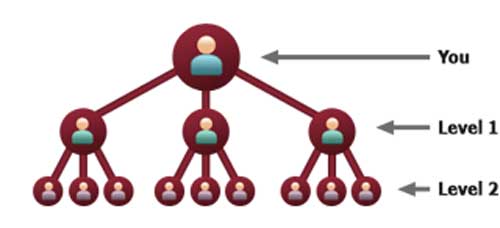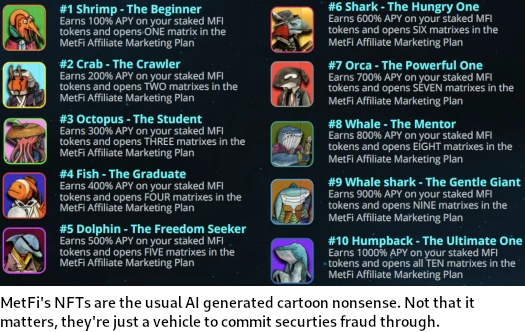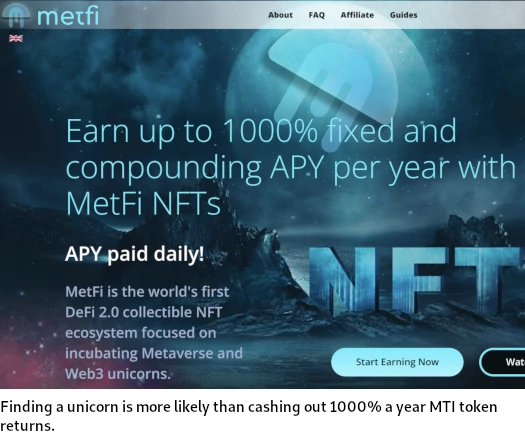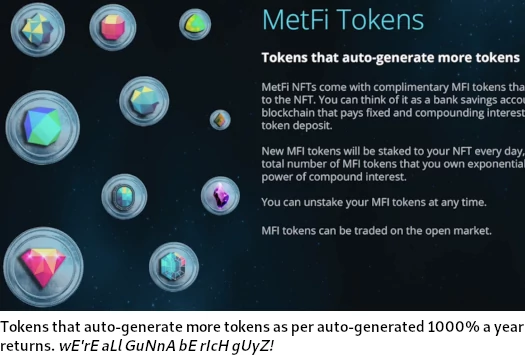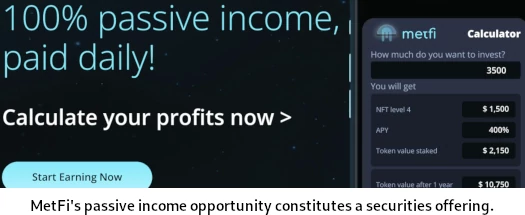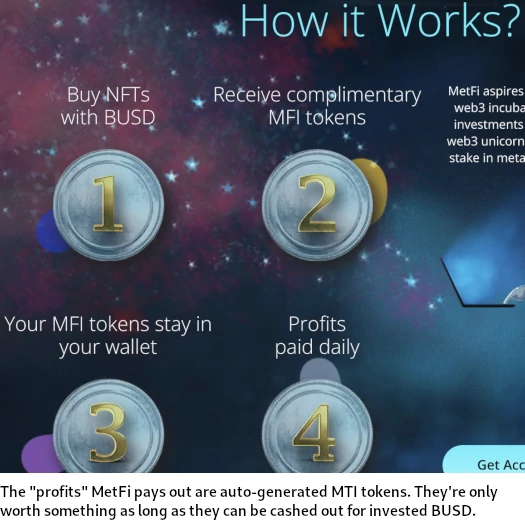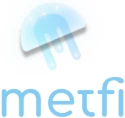
MetFi’s website domain (“metafi.io”), was first registered in March 2021. The private registration was last updated on March 12th, 2022.
Given the May 21st 2022 launch date cited on MetFi’s whitepaper, it’s safe to assume the current owner(s) took possession of the domain in March.
Despite representations nobody is running MetFi, MetFi’s owner(s) communicate to investors through a Discord chat group.
As always, if an MLM company is not openly upfront about who is running or owns it, think long and hard about joining and/or handing over any money.
MetFi’s Products
MetFi has no retailable products or services.
Affiliates are only able to market MetFi affiliate membership itself.
MetFi’s Compensation Plan
MetFi runs a ten-tier investment scheme in Binance USD (BUSD).
BUSD is a stablecoin represented to be pegged to the USD, i.e. 1 BUSD = $1 USD.
MetFi’s ten investment tiers are:
- Shrimp – 100 BUSD
- Crab – 200 BUSD
- Octopus – 400 BUSD
- Fish – 800 BUSD
- Dolphin – 1600 BUSD
- Shark – 3200 BUSD
- Orca – 6400 BUSD
- Whale – 12,800 BUSD
- Whale Shark – 25,600 BUSD
- Humpback – 51,200 BUSD
These tiers correspond with NFT investment positions.
When a MetFi affiliate invests, they receive a set amount of MFI tokens. MFI tokens are then parked with MetFi on the promise of an annual ROI, calculated and paid daily.
- invest at the Shrimp tier and receive $10 worth of MFI tokens, invested on the promise of a 100% annual ROI
- invest at the Crab tier and receive $20 worth of MFI tokens, invested on the promise of a 200% annual ROI
- invest at the Octopus tier and receive $40 worth of MFI tokens, invested on the promise a 300% annual ROI
- invest at the Fish tier and receive $80 worth of MFI tokens, invested on the promise of a 400% annual ROI
- invest at the Dolphin tier and receive $160 worth of MFI tokens, invested on the promise of a 500% annual ROI
- invest at the Shark tier and receive $320 worth of MFI tokens, invested on the promise of a 600% annual ROI
- invest at the Orca tier and receive $640 worth of MFI tokens, invested on the promise of a 700% annual ROI
- invest at the Whale tier and receive $1280 worth of MFI tokens, invested on the promise of an 800% annual ROI
- invest at the Whale Shark tier and receive $2560 worth of MFI tokens, invested on the promise of a 900% annual ROI
- invest at the Humpback tier and receive $10,230 worth of MFI tokens, invested on the promise of a 1000% annual ROI
Note that MetFi do not publish the current internal MTI trading value on their website.
The MLM side of MetFi pays on recruitment of affiliate investors. Although not explicitly clarified, it is assumed all commissions and bonuses are paid in MTI tokens.
Fast Start Rewards
Fast Start Rewards are paid out during a newly recruited affiliate’s first thirty days.
To qualify for Fast Start Rewards, a MetFi affiliate must recruit at least five affiliates who’ve invested at tier 4 or higher (Fish Tier).
Once that condition is satisfied, and if an affiliate is still within their first thirty day period, they receive a 10% Fast Start Reward on all BUSD invested by personally recruited affiliates.
Residual Commissions
MetFi pays residual commissions via a 3×10 matrix.
A 3×10 matrix places an affiliate at the top of a matrix, with three positions directly under them:
These three positions form the first level of the matrix. The second level of the matrix is generated by splitting each of these three positions into another three positions each (9 positions).
Levels three to ten of the matrix are generated in the same manner, with each new level housing three times as many positions as the previous level.
Each MetFi investment tier corresponds to its own 3×10 matrix tier, resulting in ten 3×10 matrix tiers in total.
Positions in each matrix are filled via direct and indirect recruitment of affiliates who have invested in that particular investment tier.
For each person recruited into a MetFi affiliate’s matrix (on any tier), the receive:
- 5% of the BUSD invested; and
- 1% of any additional MFI token investment made at time of BUSD investment
Note that MetFi affiliates only earn on matrix tiers they have personally invested on.
Matching Bonus
MetFi affiliates earn a 50% match on residual commissions and daily ROI amounts paid to personally recruited affiliates.
To qualify for the Matching Bonus, a MetFi affiliate must recruit five affiliates who’ve all invested at tier 4 or higher (Fish Tier).
Joining MetFi
MetFi affiliate membership is free.
Full participation in the attached income opportunity costs 102,300 BUSD ($102,300 USD equivalent).
MetFi Conclusion
MetFi pitches itself as a
collectible NFT ecosystem focused on incubating metaverse and Web3 unicorns and sharing the financial returns with all MetFi NFT owners.
Once the crypto bro marketing jargon is distilled, MetFi reveals itself to be a simple Ponzi attached to a matrix-based pyramid scheme.
The Ponzi side of MetFi is relatively straight forward: You invest BUSD, you get MTI tokens and a daily ROI is paid on your invested MTI tokens.
MetFi NFTs generate rewards every 12 hours per the staking protocol.
MetFi affiliates are able to cash out as long as there’s invested BUSD left to steal.
MTI is a BEP20 token. These take five minutes to set up at little to no cost.
MTI tokens are generated on demand and have no value outside of MetFi’s Ponzi scheme.
MetFi’s pyramid scheme is as straightforward as its Ponzi scheme. Through a series of matrices, affiliate investors are rewarded on direct and indirect recruitment of affiliate investors.
Both components of MetFi are fraudulent and both rely on the unsustainable constant recruitment of new affiliate investors to fatten the withdrawal pot.
In an attempt to reassure investors MetFi isn’t a scam, the scammers behind the scam ironically lay out their fraudulent business model in MetFi’s whitepaper;
The regulatory environment in the blockchain and cryptocurrency sector is loosely defined and open to abuse by unscrupulous actors and even well intentioned actors that jumped in way over their heads with other people’s money.
Outright scams and project failures occur far too frequently, tarnishing the reputation of the blockchain and crypto sector, and giving regulators more reasons to clamp down hard on the sector.
“Regulation of blockchain and cryptocurrency” is entirely irrelevant. MetFi’s passive investment opportunity constitutes a securities offering, the regulation of which offers no ambiguity.
Either MetFi and its owner(s) are registered with financial regulators and providing audited financial reports, or they’re not and are committing securities fraud.
The reason MetFi opts to commit securities fraud is because it’s a Ponzi scheme; a fraudulent business model illegal the world over.
The scammers behind MetFi further seek to reassure investors a collapse is impossible, by bending the laws of mathematics;
On June 9, 2022, MetFi locked 25,005 LP tokens to a smart contract for 5 years that were valued at approximately $2.5M at the time of locking – making MetFi rug proof for 5 years.
MetFi is a Ponzi scheme that will collapse when withdrawals inevitably exceed new investment. That puts the scam in the red, eventually leading to a collapse, or “rug pull” in crypto bro jargon.
Locking up worthless tokens in some bullshit smart contract doesn’t change basic principles of mathematics.
Until recruitment dies down, expect insufferable gloating from MetFi crypto bros jacking off to their exponentially growing MTI token balances.
By the time they realize there’s nothing left to withdraw, it will of course be too late.
The math behind Ponzi schemes guarantees that when they collapse, the majority of participants lose money.
